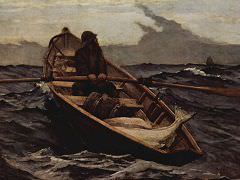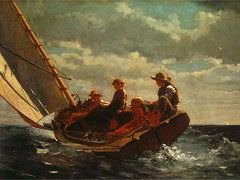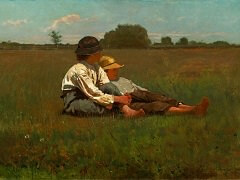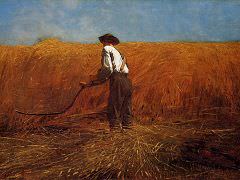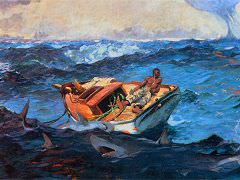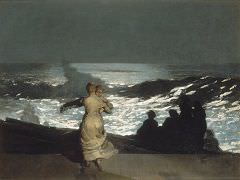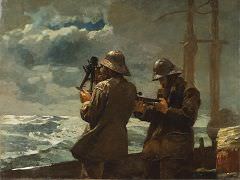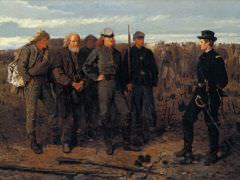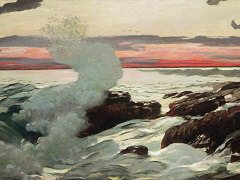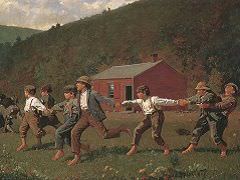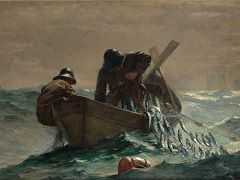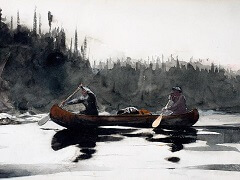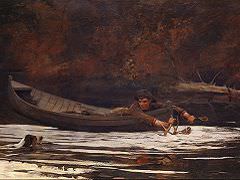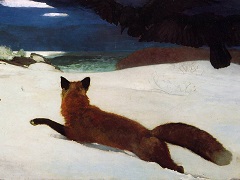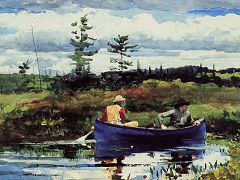Maine Coast, 1896 by Winslow Homer
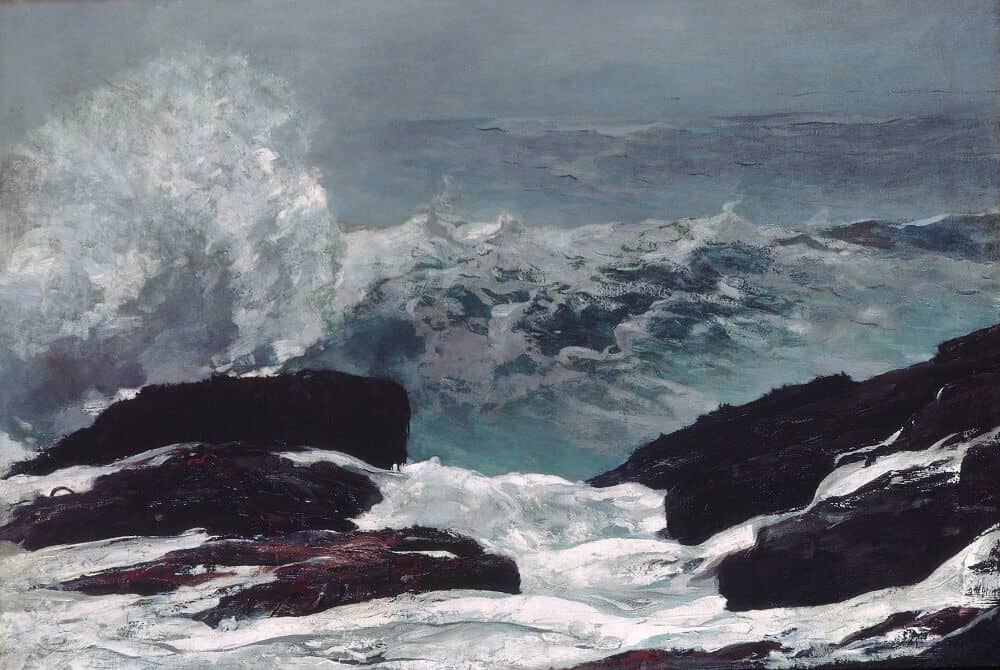
Nothing could be simpler than Maine Coast. Only a typical work by Mark Rothko or Barnett Newman is superficially easier to describe. A wave rolls into shore, crashing against a group of dark foreground rocks already awash in white foam. At left, the wave bursts in a spectacular circular explosion. In the background distance, the sea grades to a high, hazy, often imperceptible horizon. That's the subject; the interest is in the execution.
Homer applies paint to this canvas with all the controlled wildness of his late style. In the foreground he lays the white on thick with brush and palette knife, creating long, serpentine passages of white pigment that are almost enamel-smooth, like the thick paint surfaces in early Cezanne. The brightness, smooth texture and painterly freedom of these white streaks, set against more vigorously brushed areas, undermine the realistic representation of foam. This is as obviously paint as the painted flesh in a portrait by Lucian Freud. There's a dramatic difference between this foreground, with its blocky, geometric blacks contrasting sharply with bright, flowing white, and the painting's background, where the multicolored sea possesses a harmonious, almost Whistlerian beauty. The background resembles the work of any number of sea painters of the late 1800's, but the foreground is Modern with a capital M, looking forward to the twentieth-century Maine coastal paintings of Bellows and Hartley. With this contrast, this collision of styles, Homer seems to be enacting the death of decorative, tonal marine painting on the hard, unforgiving rocks of his realism.
Background and foreground, sea and stone, collide like matter and anti-matter, and the moment of their collision produces the painting's most violent and exciting passage. This awesome explosion, this great, Dionysian, barrier-breaking burst of spray and foam, is a deliberately frenzied passage, both descriptive and abstract. A creation of short, omnidirectional brushstrokes - heavily impasted whites and grays that thin out at the upper edges into a mist that unites with the air - this apparition of nature's transforming power is so forceful that it even bursts the barrier of the canvas, continuing out of sight on the left side. It's the most furiously kinetic moment in a work that rolls and slides with energy.

